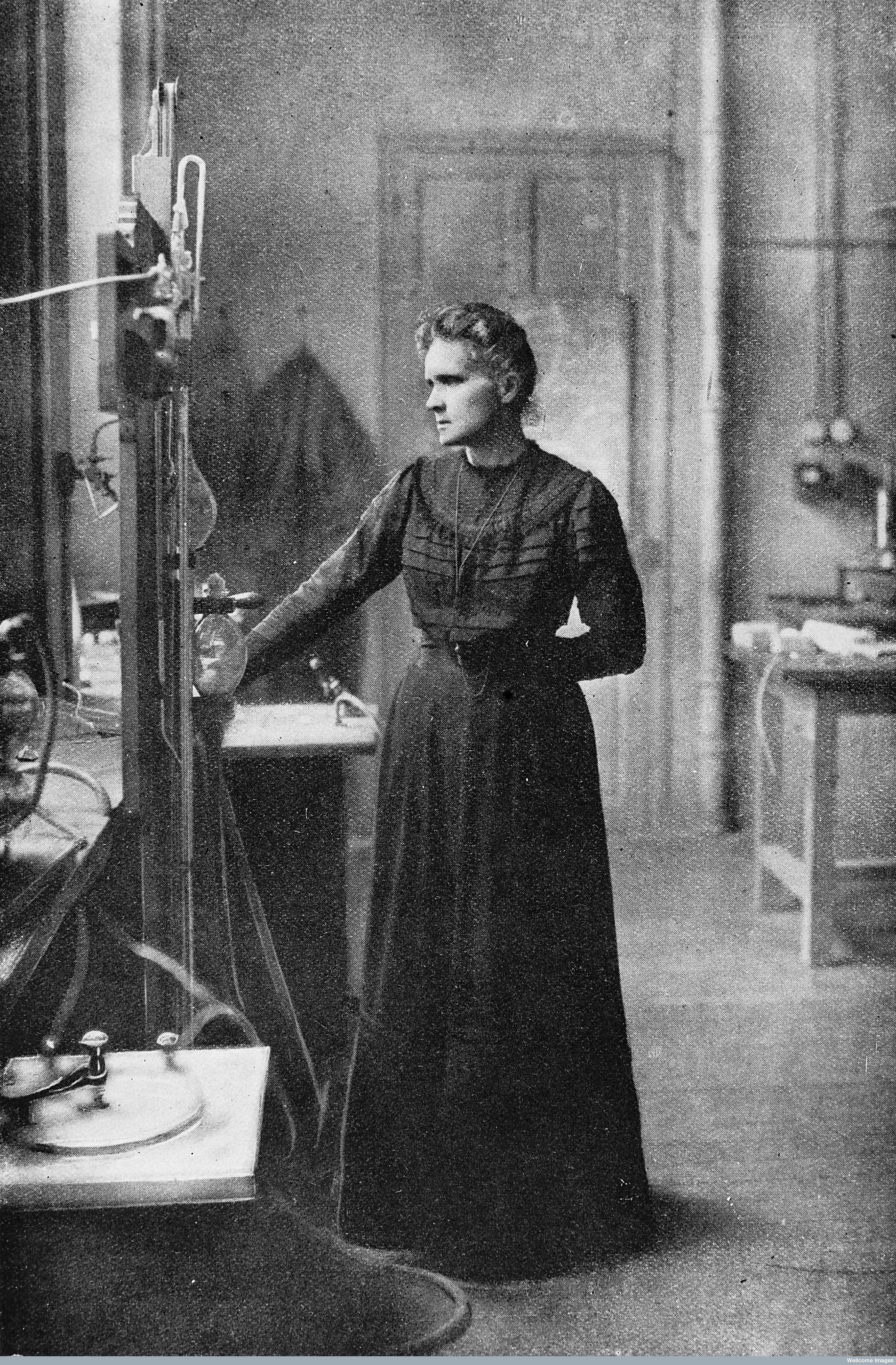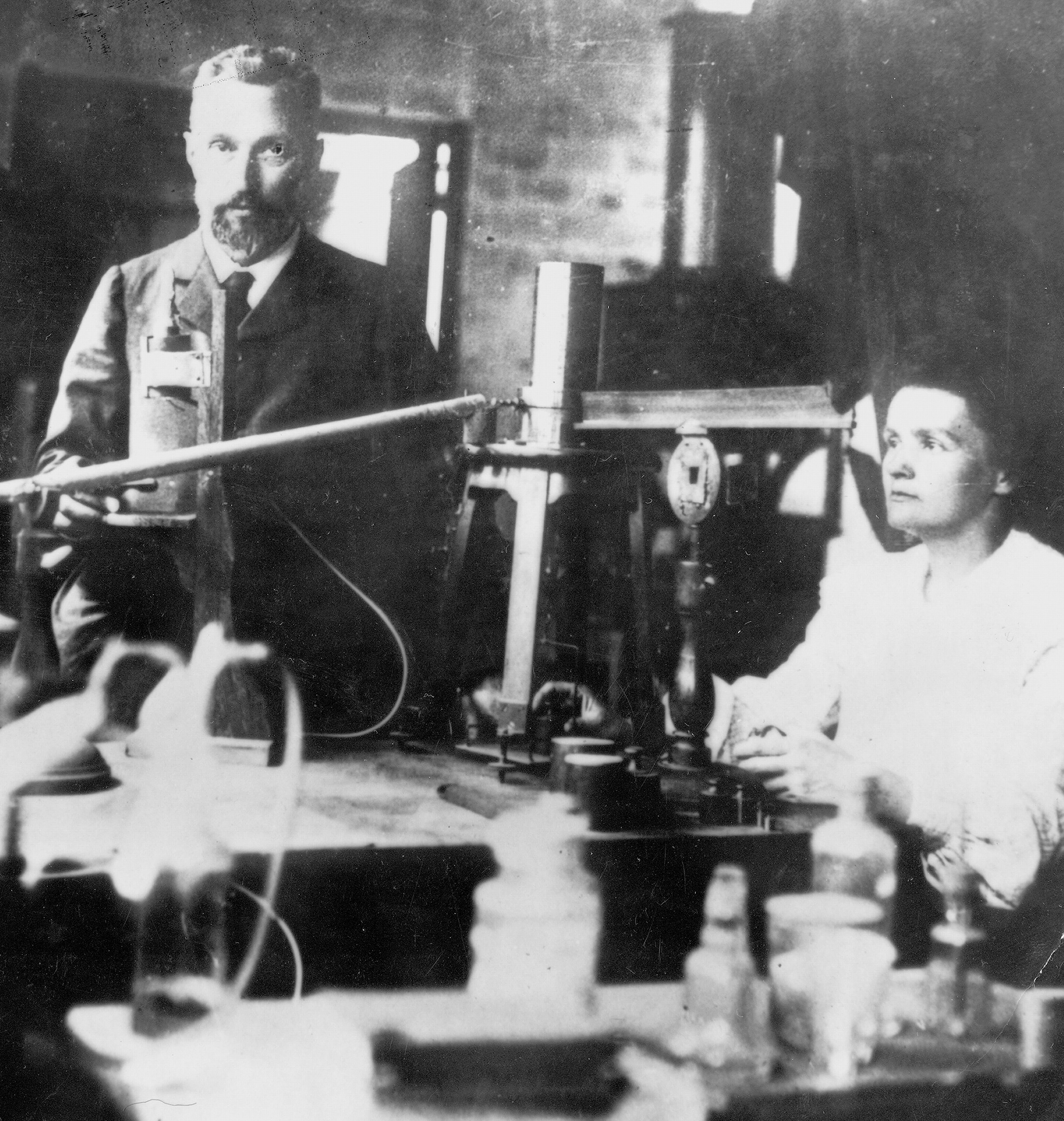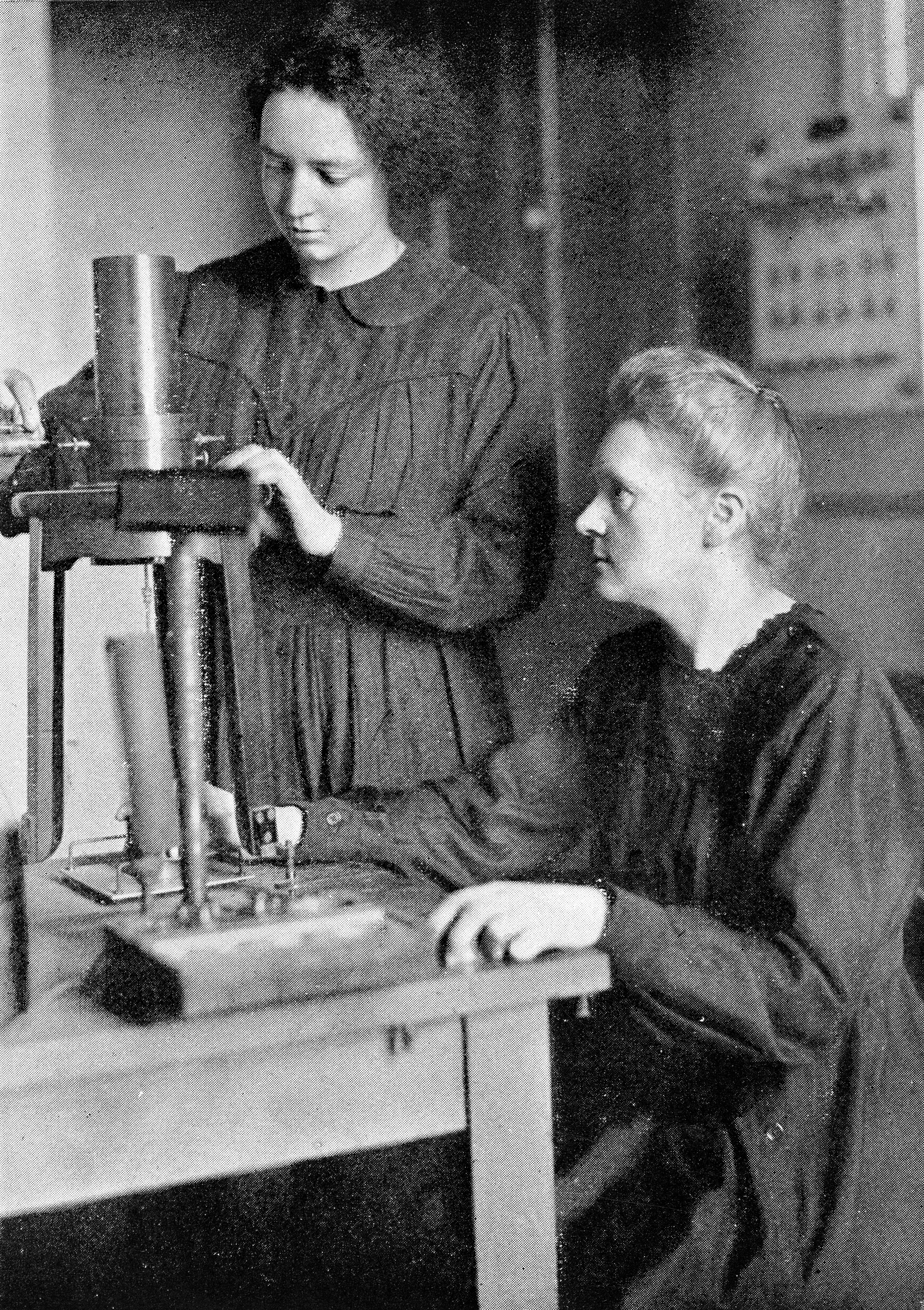Curie, Marie Skłodowska << KYOO ree, ma REE sklaw DAWF skah >> (1867-1934), was French physicist originally from Poland. She became famous for her research on radioactivity. Curie was the first woman awarded a Nobel Prize. She was also the first person to win two Nobel Prizes, receiving one in physics and one in chemistry. In addition, Curie was the first woman to teach at the Sorbonne, a famous university in Paris.


Curie and her husband, the French physicist Pierre Curie, worked together in the late 1890’s. They studied the radiation given off by such chemical elements as uranium and thorium. They found that uranium ore called pitchblende gave off much more radiation than could be accounted for by the amount of uranium in the ore. The Curies then searched for the source of the additional radiation. In 1898, they announced their discovery of two previously unknown, highly radioactive elements. They named the new elements polonium and radium. The French chemist Gustave Bémont helped in the discovery of radium. The Curies worked to separate tiny amounts of these elements from tons of pitchblende.
Marie theorized that radioactivity was a property linked to individual atoms, rather than one that depended on the arrangements of atoms in molecules. Later, other scientists showed that polonium and radium developed from the original uranium atoms. The new substances were created by a process called radioactive decay or transmutation. That is, the uranium atoms had changed from one element into another by giving off radiation. Previously, scientists had not known that atoms could change in any way.
The Curies’ work was inspired by Antoine Henri Becquerel, a French physicist who had also conducted research on radiation. In 1903, Becquerel and the Curies won the Nobel Prize in physics. Becquerel received the award for discovering natural radioactivity. The Curies got the prize for their study of radiation. They were the first married couple to share a Nobel Prize. In 1911, Marie Curie won the Nobel Prize in chemistry for her discovery of the new elements and her work in isolating radium and studying its chemical properties.
Marie Curie was born Marya Skłodowska on Nov. 7, 1867, in Warsaw, Poland. Poland was then ruled by Russia. Both of Skłodowska’s parents were teachers. She met Pierre Curie in Paris, where she studied chemistry, mathematics, and physics. She died on July 4, 1934, of leukemia. Years of exposure to radiation probably caused the illness.
The Curies’ daughter Irène Joliot-Curie also became a scientist. She and her husband, Frédéric Joliot-Curie, were the second married couple to share a Nobel Prize. They received the 1935 Nobel Prize in chemistry for the discovery that radioactive elements could be created artificially.

